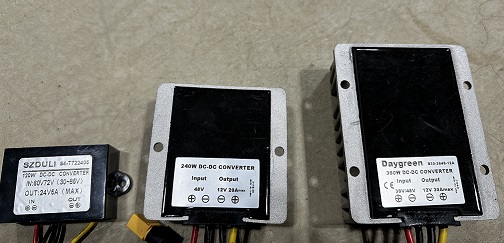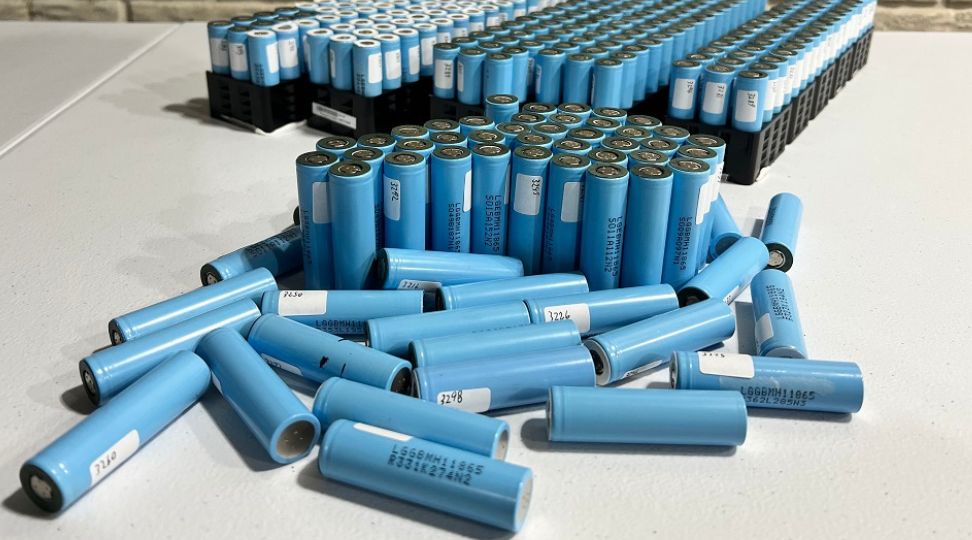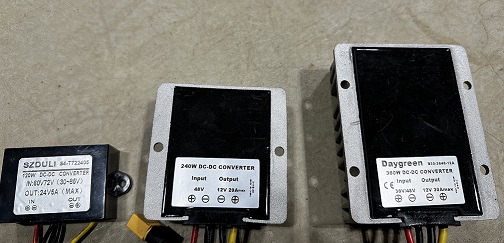
How to reduce 48 volts to 12 volts
In various electrical and electronic applications, there's a common challenge: reducing a higher voltage (in this case, 48 volts) to a lower voltage (12 volts) efficiently and safely. This process involves understanding the fundamental principles of voltage reduction and selecting the appropriate equipment to achieve this. Below, we delve into the specifics of how to efficiently reduce 48V to 12V, highlighting the inefficiency of linear regulators for this purpose and the advantage of using a switch mode regulator, specifically a buck converter. Need to reduce 24 volts to 12 volts? Check out our article "How to Reduce 24 Volts to 12 Volts" for detailed guidance.
Understanding Voltage Reduction In a 48v to 12v System
Reducing voltage from 48V to 12V might seem straightforward, but doing it efficiently is critical, especially when considering the heat dissipation associated with voltage reduction. The inefficiency of using linear regulators for such a task is notable, as they dissipate a significant amount of heat, proportional to the voltage difference multiplied by the current. For example, reducing 48V to 12V at 1 ampere generates 36 watts of heat, which is highly inefficient and challenging to manage, especially in compact devices.
Switch Mode Regulators for Reducing 48v to 12v
Switch mode regulators, particularly buck converters, present a much more efficient solution for reducing voltage. Unlike linear regulators, buck converters employ active switching elements and a complex circuitry to lower the voltage efficiently, minimizing heat dissipation.
- Efficiency: Buck converters are significantly more efficient, with losses typically ranging from 10 to 15%, translating to an efficiency rate of 85 to 90%.
- Switching Noise: While they introduce some switching noise, it's generally minimal and manageable within most applications.
Types of Buck Converters
Understanding the two main types of buck converters—constant current and constant voltage—is super important for selecting the right device for your needs.
Constant Voltage Buck Converter
A constant voltage buck converter is fundamentally designed to maintain a steady output voltage, irrespective of the variations in load current. This characteristic makes it exceptionally suitable for a broad spectrum of electronics that operate within a specific voltage range but may experience fluctuating current consumption.
Key Features:
- Adjustability: This type of converter typically comes with a user-friendly knob or a digital interface, allowing users to dial in the desired output voltage. This feature is particularly handy when you need to step down a higher voltage, say 48V, to a lower level, such as 12V, ensuring the connected device receives the correct voltage.
- Versatility in Applications: It's the go-to choice for powering devices that are sensitive to voltage fluctuations. For example, electronic devices like inverters, LED lights, and electric fans that require a consistent voltage to operate optimally can benefit greatly from a constant voltage buck converter.
Constant Current Buck Converter
On the other hand, a constant current buck converter is designed to deliver a fixed output current, making it ideal for applications where the current level rather than the voltage needs to be controlled. This type is particularly useful for charging batteries and driving high-power LEDs, where too much current could damage the device or affect its lifespan.
Key Features:
- Dual Adjustment: These converters are equipped with mechanisms (usually knobs or digital controls) to set both the maximum output voltage and the maximum output current. This dual-control feature allows for precise management of the power supplied to the load, ensuring the safety and efficiency of the operation.
- Enhanced Safety: By limiting the maximum current that can flow through the circuit, constant current buck converters add an extra layer of protection. This is especially valuable in preventing overheating, reducing the likelihood of component damage, and mitigating fire hazards in the event of a short circuit or an overcurrent situation.
Selecting the Right Buck Converter
The choice between a constant voltage and a constant current buck converter hinges on the specific requirements of your application:
- For General Voltage Reduction Needs: If your primary requirement is to reduce voltage to a stable level for various electronics, a constant voltage buck converter will usually suffice. It's suitable for most scenarios where the device operates within a fixed voltage range but can tolerate some variance in current.
- For Battery Charging or Driving High Power LEDs: When it comes to applications that demand not only a specific voltage but also control over the current—such as charging lithium batteries or powering high-intensity LEDs—a constant current buck converter is indispensable. It ensures that the current remains within safe limits, providing both the stability and control needed for these sensitive applications.
Reducing voltage from 48V to 12V efficiently requires a thorough understanding of the available technologies and their applications. By choosing the appropriate type of buck converter, you can ensure efficient voltage reduction with minimal heat dissipation and enhanced safety features. This guide underscores the importance of selecting the right equipment for your specific voltage reduction needs, ensuring both efficiency and safety in your electrical and electronic projects.
We hope this article contains everything you needed to know about reducing 48 volts to 12 volts. Thanks for reading!


